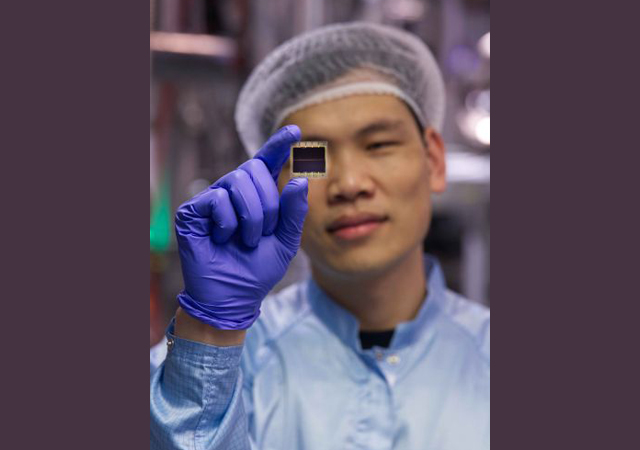

Solar technology has significantly advanced since Charles Fritts, a New York inventor, created the first solar cell in 1883. His original design was not very effective, converting only about 1% to 2% of absorbed sunlight into electricity.
In contrast, modern silicon-based solar cells now achieve an average efficiency of around 22%. Higher efficiency in solar cells allows for greater electricity generation from each panel, reducing the materials and land required for installations, according to World Economic Forum.
The production of silicon solar cells is energy-intensive, prompting experts to emphasise the need for renewable energy capacity to triple by 2030 to limit global warming to 1.5°C. Given solar power's anticipated role in this transition, the industry is hurriedly working to enhance the efficiency of solar technologies.
Advances in perovskite technology
Recent innovations have emerged from perovskites, a class of crystalline compounds viewed as a promising advancement for solar panels. Perovskites can be engineered to respond to various wavelengths in the solar spectrum, allowing them to be combined with silicon to yield more power from the same device.
These materials are easier to produce, cost-effective, and flexible, drawing increasing research and investment globally. Countries like Germany, Saudi Arabia, and China are exploring different variations to optimise efficiency, durability, and cost.
A notable study published in Nature by LONGi, a Chinese solar module manufacturer, highlights achievements with its perovskite-silicon tandem solar cell. This technology layers an ultra-thin perovskite cell atop a standard silicon cell. LONGi reports a certified efficiency of 33.9%, marking a new record for this type of cell and surpassing the theoretical limits of single-junction solar cells.
Innovative power-generating materials
These cutting-edge cells are small, measuring just 1 cm², and currently produced in laboratories. However, researchers are optimistic about scaling these efficiency levels to larger commercial cells. Perovskite's versatility extends beyond traditional applications; because it can be formulated as an ink, it can be printed onto various surfaces or woven into fabrics and building materials.
At the University of Oxford, scientists have created a thin, flexible power-generating material using perovskite. This material has been certified to achieve over 27% energy efficiency, making it suitable for integration into everyday objects, such as smartphones and vehicles.
As research progresses, challenges remain regarding the sustainability of mineral extraction and processing for these technologies. Nevertheless, Oxford researchers believe this could pave the way for a new industry focused on producing affordable, sustainable solar energy from existing infrastructure and items.
Integrating solar power in urban environments
Innovations also include integrating solar generation into urban settings, such as solar windows. This transparent technology captures ultraviolet and infrared light, converting it into renewable energy. Such windows have the potential to turn skyscrapers into solar farms and have already been implemented in buildings across the US and Europe.
Researchers are also developing panels that can generate electricity in low-light conditions or harness the energy from rain striking the panels. Additionally, artificial intelligence is being utilised to optimise the operation of solar farms, while quantum technologies are recognised by the World Economic Forum as key to advancing solar cell design.
Despite these advancements, experts agree that ongoing research to enhance the efficiency, affordability, and sustainability of solar power is crucial. The future of solar energy looks promising, with projections suggesting it could become the world's leading power source by 2050.
